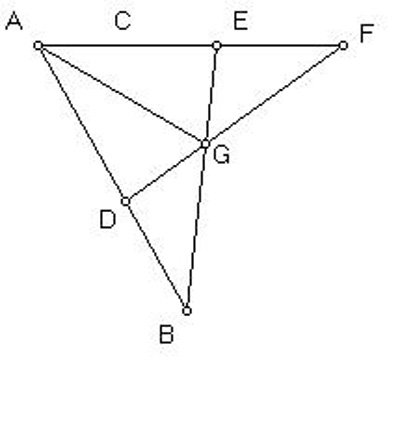- About MAA
- Membership
- MAA Publications
- Periodicals
- Blogs
- MAA Book Series
- MAA Press (an imprint of the AMS)
- MAA Notes
- MAA Reviews
- Mathematical Communication
- Information for Libraries
- Author Resources
- Advertise with MAA
- Meetings
- Competitions
- Programs
- Communities
- MAA Sections
- SIGMAA
- MAA Connect
- Students
- MAA Awards
- Awards Booklets
- Writing Awards
- Teaching Awards
- Service Awards
- Research Awards
- Lecture Awards
- Putnam Competition Individual and Team Winners
- D. E. Shaw Group AMC 8 Awards & Certificates
- Maryam Mirzakhani AMC 10 A Awards & Certificates
- Two Sigma AMC 10 B Awards & Certificates
- Jane Street AMC 12 A Awards & Certificates
- Akamai AMC 12 B Awards & Certificates
- High School Teachers
- News
You are here
Van Schooten's Ruler Constructions - Verbatim First Solution to Problem I
We repeat Problem I, trisecting a given angle.
Problem I. Given a rectilinear angle BAC, to cut it into two equal pieces.
In the detailed version of the solution to Problem I given on the preceding page, we slightly misrepresented the given data. In fact, when van Schooten gives us the angle BAC, he seems to be assuming that AB is a segment, and that C is a segment with A as one of its endpoints. It could also be that B and C are both line segments, sharing A as an endpoint, and that the symbol B is also used to denote a point on the segment B. This seems to have no real consequence, but it is curious. Van Schooten’s words translate as follows.
Suppose that in the line AB points B and D are placed. and are placed on line AC so that AE equals AD, and E is a point further along AC so that EF equals DB; And draw straight lines BE, DF, which intersect at G. I say that the line AG cuts the angle BAC into two equal pieces.

Van Schooten also includes a proof of the correctness of each of his constructions, but we will generally leave those to the reader.
Next:
C. Edward Sandifer, "Van Schooten's Ruler Constructions - Verbatim First Solution to Problem I," Convergence (August 2010)




